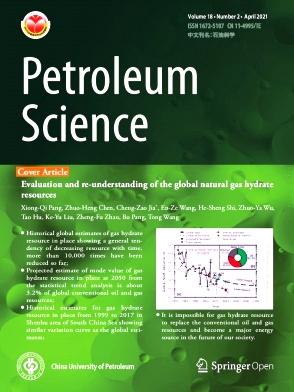Numerical simulation of gas kick evolution and wellbore pressure response characteristics during the deepwater dual gradient drilling
IF 6
1区 工程技术
Q2 ENERGY & FUELS
引用次数: 0
Abstract
The gas kick represents a major risk in deepwater oil and gas exploration. Understanding the dynamics of gas kick evolution and the associated pressure response characteristics is critical for effective well control. In this paper, we introduce a transient wellbore multiphase flow model specifically developed to simulate gas kick in deepwater dual-gradient drilling, incorporating a downhole separator. The model accounts for the variable mass flow within the annulus and heat exchange between the annular fluid and the formation. Using this model, we analyzed the multiphase flow and thermodynamic behavior during the gas kick. Simulation results reveal a progressive increase in bottom-hole temperature, underscoring its potential as a key indicator for gas kick early detection. Additionally, variable gradient parameters affect not only the annular equivalent circulating density (ECD) profile but also the evolution of the gas kick. The inclusion of a downhole separator alters the annular ECD profile, creating a “broken line” shape, which enhances adaptability to the multi-pressure systems typically encountered in deepwater formation. By adjusting factors such as hollow sphere concentration, separator position, and separation efficiency, the annular ECD profile can be effectively customized. This study provides important theoretical insights and practical applications for utilizing dual-gradient drilling technology to address challenges in deepwater formation drilling.
求助全文
约1分钟内获得全文
求助全文
来源期刊

Petroleum Science
地学-地球化学与地球物理
CiteScore
7.70
自引率
16.10%
发文量
311
审稿时长
63 days
期刊介绍:
Petroleum Science is the only English journal in China on petroleum science and technology that is intended for professionals engaged in petroleum science research and technical applications all over the world, as well as the managerial personnel of oil companies. It covers petroleum geology, petroleum geophysics, petroleum engineering, petrochemistry & chemical engineering, petroleum mechanics, and economic management. It aims to introduce the latest results in oil industry research in China, promote cooperation in petroleum science research between China and the rest of the world, and build a bridge for scientific communication between China and the world.
 求助内容:
求助内容: 应助结果提醒方式:
应助结果提醒方式:


